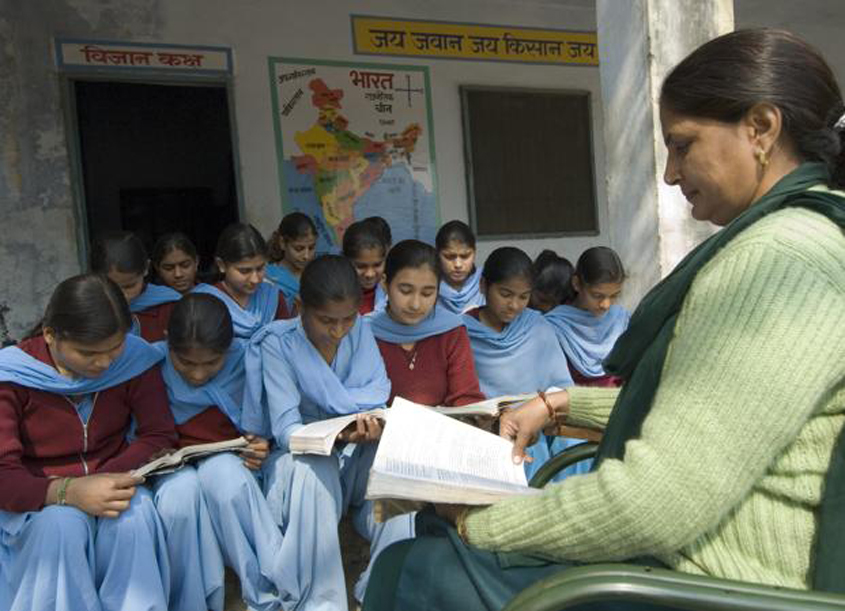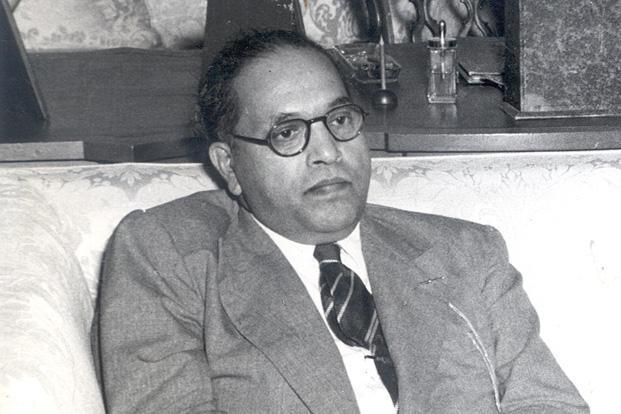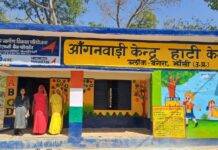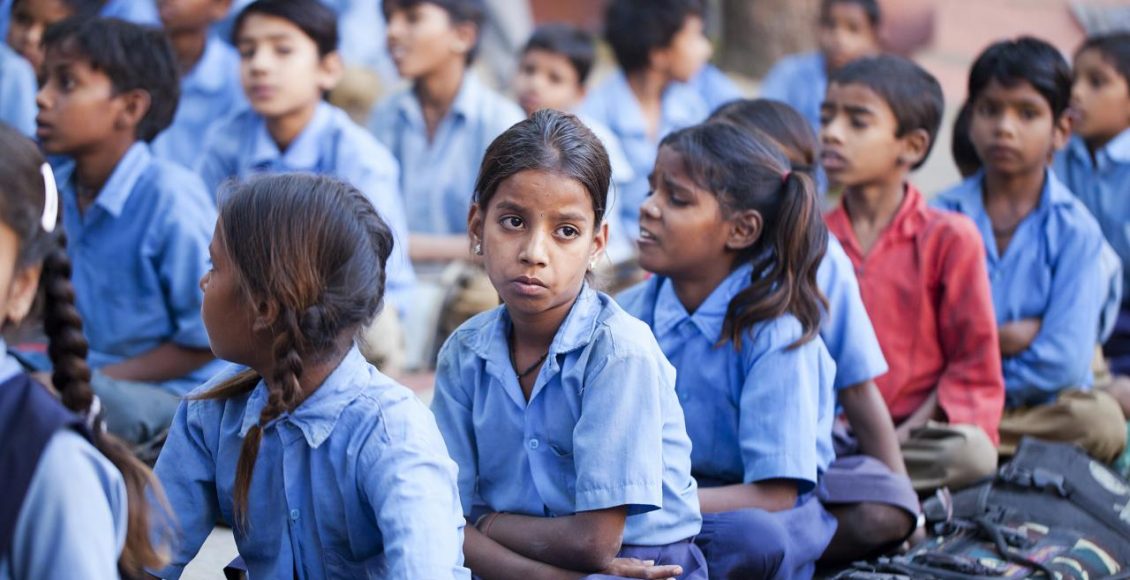They say that a harmony is made up of different musical voices sounding different notes and yet one is always above the other. Maybe the Taliban in the same metaphorical view evaluates the situation that Afghanistan can only be in harmony when the female notes of the music are always below the male notes. The criteria of this hierarchy are as we all know are deeply rooted in the patriarchal history of our world and Education is the key which can disturb this so-called harmony as it demands for equality and dignity of life. Aims of Education refuses the justification of injustice and maybe this is the fear that occupies the minds of Taliban.
It has been a year now since the Taliban banned girls from attending high school. Nearly 1 million girls have been deprived of their fundamental right of education solely because of their gender but the question is why? What is the fear of education? What will happen if these girls receive education just like the rest of the world? It is one thing to be not able to receive the education because of the various economic, social or financial constraints but how can one justify the notion that an individual does not have a right to be educated because ‘they’ are born into a particular social category called ‘the female’. The category which is purely a social construct and is designed for oppression. If the larger aim of education is the welfare of the individual and the society, then what could be the rationale of deliberately wanting to not let one cohort of the society receive the education? Why do we not want the ‘females’, ‘girls’, ‘women’ to receive the education? Do we not want the welfare of the society or do we not consider the females to be a part of the society that we want to flourish?
As per Khaama Press, earlier this month female students in Afghanistan’s Paktia province protested against the closure of their school and marched in the area. The province’s schools reopened for girls after a decision by tribal chiefs and local education authorities but were closed again just two weeks as the decision was taken without the Taliban’s formal instruction. The Taliban’s decision to ban female students from receiving education has drawn widespread criticism at the national and international levels. Further, the Taliban regime which took over Kabul in August last year has curtailed women’s rights and freedoms, with women largely excluded from the workforce due to the economic crisis and restrictions.
These bans and restrictions are creating and reproducing the binaries of ‘I’ and the ‘Other’. The division of the world into spatial dichotomies of the Male and the Female is being reproduced and strengthened. It clearly sees the society into two divisions – one important enough to be educated and to be empowered and the other dangerous to be educated, but what is the danger in education or education in itself is the danger? Education teaches you to ask questions and stand up against inequality and oppression and when the entire ideology is based upon oppression how can they afford the oppressed to start asking questions, right?
GIRLHOOD AND EDUCATION
In order to talk about the goals of education and how it is related and affecting the girls in Afghanistan and all over the Middle East (considering different caste and religious locations and social identities), it becomes important to discuss the idea of ‘girls’ first. Some of the primary questions that one needs to have in mind are – Who are these girls? What does it mean to be a girl in the contemporary world? Do all girl(s) have a similar girlhood? If not, then how are they different? What does it mean to have different girlhood(s)? What are the locations through which these differences could be experienced or studied about?
As prof. Krishna Kumar discusses in his reading “Education and Girlhood” about the process of imprinting by which a girl is prepared for her destined life as woman makes a clear point about how girlhood is different from childhood. If they were the same, we would not have to have different terms for them. So, as he describes “the term ‘girlhood’ refers to this mould, shaped through culture over the ages, that imprints on the mind of the female child from the earliest stages of development.” (Kumar,2016).
The girls we are talking about belong to different geographical locations of the world and they go through some similar processes of imprinting through the social institutions, such as the family, kinship networks, schooling, and marriage etc. but because they belong to different caste, class, religion and social locations thus they do not have similar experiences of girlhood. Therefore, there is no universal girlhood but there are local struggles related to it. The term childhood refers to a normative meaning of childhood experiences and it overlooks those struggles of being a girl in different contexts.
Therefore, girlhood is different from childhood as it carries a gendered struggle with it from different social locations then it becomes important to realise that ‘Aims of education’ is different from ‘Goals of education’ for girls. The article ‘Education and Girlhood’ talks about education as a means to obtain entry into the social world while ensuring existence in the physical. “The reason is that the physical milieu exists and is composed of elements living in the present, whereas the social milieu is composed of elements that have been shaped by a past that borders the present (kumar,2016)”.
The goals of education for girls as Prof. Kumar described is to mould and shape them into a relational identity that in future is going to be a ‘Women’. The Taliban’s idea of education is also somewhere reinforcing this idea of relational identity by forbidding the girls to be an ‘Independent Individual’ in future but to accept their future as somebody who will always be dependent on a man and will live to serve him for the rest of her life. Forbidding them from accessing education means forbidding them from any kind of capital that can empower them. The ‘Capitals’ that I am talking about are important to understand as they are very closely interlinked to the creation and beholding of the ‘Power(s)’ that governs the social dynamics of the society that we live in. The next section of this article tries to briefly discuss these forms of Capital and the Power dynamics associated with it and what role education plays in all of it.
FORMS OF CAPITAL AND POWER DYNAMICS
Pierre Bourdieu was a French sociologist, anthropologist, philosopher and public intellectual. Bourdieu’s work was primarily concerned with the dynamics of power in society, especially the diverse and subtle ways in which power is transferred and social order is maintained within and across generations. In conscious opposition to the idealist tradition of much of Western philosophy, his work often emphasised the corporeal nature of social life and stressed the role of practice and embodiment in social dynamics.
Bourdieu approaches power in the realm of a comprehensive “theory of society” in which he discusses – how different cultural identities are created and how different forms of capitals are assimilated and transmitted. According to Bourdieu “Capital, which, in its objectified or embodied forms, takes time to accumulate and which, as a potential capacity to produce profits and to reproduce itself in identical or expanded form.” Hence, Bourdieu sees power as culturally created and constantly delegitimised through an interplay of agency and structures. The main way this happens is through what he calls ‘HABITIUS’, which is the system of habits which constitute a person or its identity leading to the politics of power in a bigger picture. He also discussed that this habitus is also not fixed but convertible or transmitted through three different “FORMS OF CAPITAL”. The three forms of capital are stated as – Economic Capital (directly convertible into money), Social Capital (social networking as an investment strategy) and Cultural Capital (forms of knowledge, skills or education).
When girls are forbidden by the Taliban to receive the formal education in a legitimised way, they are directly and indirectly forbidding them from all the three forms of capital in one way or the other. Education gives an individual an opportunity to receive different forms of knowledge and to learn skill sets of different disciplines that enables the individual to earn a livelihood. Thus, in a very direct way they are forbidding the Girls to access the Cultural capital and the Economic capital. When girls are not allowed to engage with the formal education system and are not allowed to go to schools and colleges, they are also forbidden to build the Social Capital as they are not allowed to have any social network beyond their boundaries of home and family.
These forms of capitals can help us to understand the dynamics of knowledge and power as this accumulation of capitals and then its transmission is a system of differential investments and returns. Hence, producing, reproducing and then legitimising the inequalities, at times in a very subtle fashion. When girls are not allowed to have any of these capitals, they naturally do not have access to any form of power, they are solely dependent on the others. Women’s dependency on the ‘other’ is one of the major pillars this oppression stands upon and education is a medium that can free them from the dichotomy of this equation and this is why they are afraid of an educated woman.
THEY ARE AFRAID OF EDUCATED WOMEN
Taliban has imposed draconian restrictions on the rights to freedom of expression, association, assembly and movement for women and girls. As a result of this, women and girls in Afghanistan are facing a human right crisis, deprived of the fundamental rights to non-discrimination, education, work, public participation and health. The fear is very clear that if they let the girls be educated then they are going to become powerful and skilled women who will no longer adhere to these ridiculous restrictions and would not stand the deprivation of their basic human rights.
Education not only has a personal value but also has a market value. A person who is educated can get a job in the market and earn their livelihood. Financial independence brings social independence too along with the forms of capitals that we earlier talked about. Most of the women in India, Middle East and around the world are dependent on the ‘man’ of the house because of the financial income that he is bringing with himself. If we make our women educated and provide them with equal opportunity to earn and be independent then the entire economy of the nation will collapse. One of the strong pillars of oppression over women is their financial dependency over the other and the unpaid labour that they do at home. Therefore, the social system is just not broken but it is strategically broken. It is broken because there are people who benefit from this broken system and it would not be wrong to even go to the length of saying that the toxic shades of society function because of this broken system. This brokenness is the fuel of oppression over women and education can turn it off. The social order that Taliban wants to maintain is rooted in the soil of oppression and education has a power to provide with the seeds of thoughts that one day will have a power to unearth this injustice. Education in its true sense holds the aim to cultivate ‘voice’ and provide with the necessary forms of capitals to hold an ‘Agency’. But Alas! This is the fear of education also for some because they are afraid of women who have agency and a voice to raise against injustice and oppression.
Malala Yousafzai, education rights activist and 2014 Nobel Peace Prize laureate said “I think it was much easier for the Taliban (to enforce) a ban on girls’ education back in 1996. It is much harder this time – that is because women have seen what it means to be educated, what it means to be empowered. This time is going to be much harder for the Taliban to maintain the ban on girls’ education. This ban will not last forever.” but I believe until then, we would have lost a lot more than time could ever heal or return as the only certainty in the ‘forever’ is uncertainty. Isn’t it?
Shalini Choudhary is a post graduate in Education from Ambedkar University, Delhi. She is currently working in the Department of Teacher Education, NCERT.











